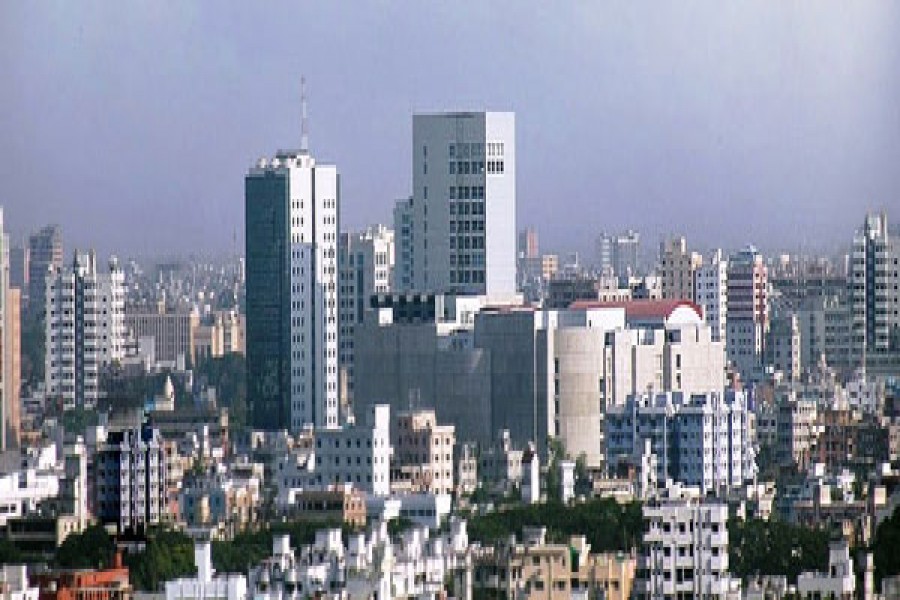
Published :
Updated :

Hussain Imam
Lying in the lower recess of the Ganges delta beside the bank of the river Buriganga, Dhaka despite its rich history and heritage is now one of the least liveable cities in the world. Nearly 17 million people living in an area of only about 360 sq km have made it the 3rd most densely-populated city in the world. In spite of its being a capital city, a mega metropolitan city, it hardly resembles a modern city, let alone a capital city.
Only two-thirds of the households in Dhaka are served by the Water Supply and Sewage Authority (WASA). The water supply in the city is not only inadequate but also not fully safe for drinking by any standard.
About 80 per cent of the city's water is supplied from groundwater through deep tubewells and the remaining 20 per cent from two surface water treatment plants: Syedabad water treatment plant phase-1 and phase2 drawing surface water from the nearby rivers. The ground water system is dwindling as the water level is sinking by two or three metres every year. The closest ground water level is believed to be over 60 metres below the ground level now.
The picture of the surface water source, the nearby rivers Buriganga and Sitalakhya, is even bleaker. Waters of these rivers have become so badly contaminated that they are now almost beyond treatment. The only ray of hope is the project the government is reported to have undertaken with a Chinese company to draw water from the Padma at a distance of no less than 160 kilometres. How much that will be cost-effective and how far that will cater to the needs of the ever burgeoning population of the city are not very clear.
The sewerage service of the city is no better either. Only 25 per cent of the population are believed to be served by the waterborne sewerage system of the WASA, another 30-35 per cent by septic tanks. The rest of the city dwellers go without any sewerage facility worth mentioning.
This is not the end of the misery. Massive migration of people from rural areas to the capital city for education, medical treatment, employment and business has added to the misery beyond comprehension.
Most appalling is the transport system of the city. Compared to the traffic of the city with hundreds and thousands of motorised and non-motorised vehicles plying at a time, the roads are narrow and too inadequate to cope with the rush. One conservative estimate suggests more than seven hundred thousand motorised vehicles like buses, trucks, jeeps, pick-ups, auto rickshaws (CNG) and private cars ply the city roads every day along with almost an equal number of manually-operated non-motorised vehicles such as rickshaws.
This has resulted in what is considered to be the worst hazard of the city-interminable traffic jam. If you want to go out on an urgent piece of errand or to keep an appointment, you cannot be sure when you should start your journey, nor can you be sure about your return home safely and in time, never mind the distance. It may take you hours to cover even a small distance of say 4-5 kilometres. If you are a cardiac patient needing an immediate hospital service, you had better count your stars. You never know whether you can make it at all or end up breathing your last on the way.
This is one aspect of the hazard. The other is the scarcity of public transport. If you are affluent enough to own a private car, fine. You only bear the brunt of the traffic jam on the way to your destination. But if you are not, you had it. CNGs are limited. Taxi cabs are a rare element. Public transports are also scarce. Even if you dare riding a bus, you have to be bold and strong enough to jump into it forcing through a maddening crowd or hang around holding the door handle with all the risk of slipping down under the wheel. Yes, there are rickshaws in plenty but they are costly. The low income group of people cannot afford the cost. Sadly, a vast majority of the people living in this city belong to this group.
True, the government is trying its best to ease the situation by constructing flyovers, undertaking mega projects like metro rail, rapid bus transport system and so on. No doubt, some improvement is in sight but these are not good enough to free the citizens of the city from the cobweb of problems they are facing every day. There is very little possibility of improving the situation to an acceptable level unless the alarming trend of people migrating from the villages is curbed, if not reversed. Population of Dhaka city is now said to be 17 million. By 2025, it is likely to be 27 million unless some effective measures are taken to reduce the speed of migration. The earlier it is done, the better.
Capt. Hussain Imam is a retired Merchant Navy officer. himam55@yahoo.co.uk


 For all latest news, follow The Financial Express Google News channel.
For all latest news, follow The Financial Express Google News channel.